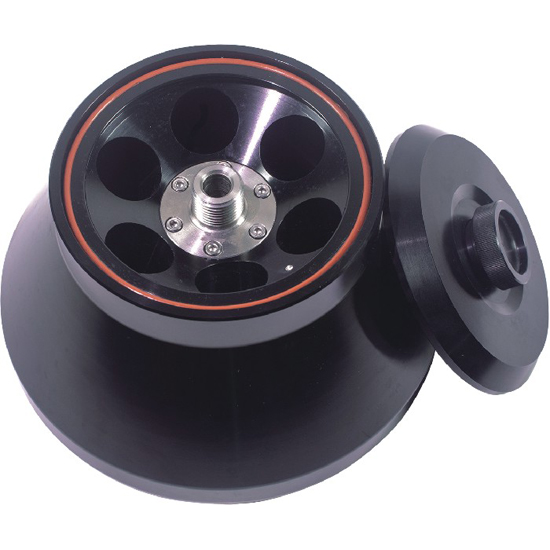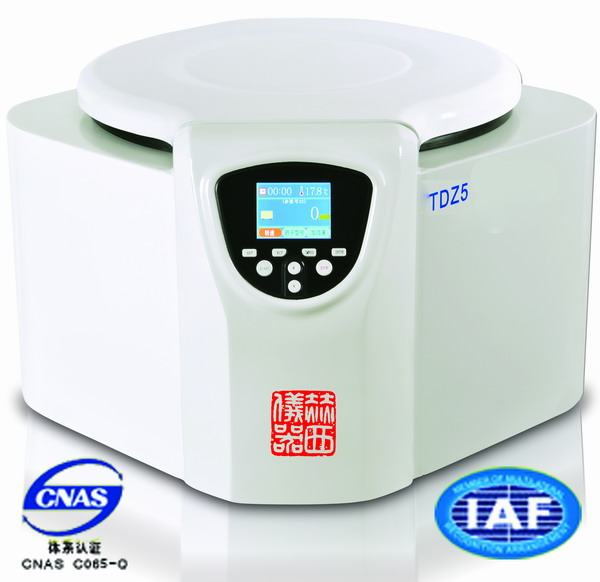- Benchtop High Speed Centrifuge
- Floor high speed centrifuge
- High speed refrigerated centrifuge
- Tabletop Low Speed Centrifuge
- Low speed refrigerated centrifuge
- Free-standing Low Speed Centrifuge
- Laboratory centrifuges
- Medical centrifuge
- Automatic decapping centrifuge
- Petroleum centrifuge
- Large capacity centrifuge
- Hematology Centrifuge
- PRP centrifuge
- Refrigerated Centrifuge
- Blood Bank Centrifuge
- Mini centrifuge
- Special centrifuge
- Centrifuge rotors
- Electronic Balance
- Vacuum Centrifugal Concentrator
- Moisture Analyzer
The centrifuge is a high-speed rotating machine with complicated structure. It is a special equipment for rapidly separating the mixed solution by using the centrifugal force and the difference in the sedimentation speed of different substances in the centrifugal field. It is a centrifuge tube containing the sample solution. A special device in which a bottle or a bag with a rotating head is placed on a centrifugal shaft, and a strong centrifugal force generated by a high-speed rotation of the rotating shaft around the shaft is used to separate particles of different properties in the sample. Analysis and separation of samples can be achieved.
Desktop intelligent high speed refrigerated centrifuge 3H24RI
Since the advent of the centrifuge, the progress of low speed, adjustment and overspeed has been mainly reflected in the design of centrifuge and centrifugal technology, and the two complement each other. Because the desktop centrifuge is simple in structure, low in cost, small in size, and soon becomes a routine laboratory instrument, almost all famous centrifuge manufacturers at home and abroad produce desktop centrifuges. For example, in recent years, the German Heraeus Heraeeus, Ai, which is active in China. Bend eppendof, Sigma Sigma, Hettich Hetrich, Hemer Hermle, American Beckman Beckman, Thermo Thermo Fisher, Japan's Hitachi Hitachi, Japan's Kubota Kubota, etc.,
From the perspective of rotational speed, desktop centrifuges are basically in the category of low-speed, high-speed centrifuges, and therefore have the characteristics of low-speed, high-speed centrifuges. Compared to floor-standing centrifuges, they are only smaller in size and capacity.
There are many types and models of laboratory centrifuges, both domestic and imported. According to the application, they can be divided into analytical centrifuges and preparative centrifuges. According to the speed, they can be divided into:
Ordinary centrifuge (low speed) <10000r/min;
High speed centrifuge 10000 ~ 30000r / min;
Ultracentrifuge 30000 ~ 80000r / min;
Ultra high speed centrifuge >80000r/min;
Generally, a centrifuge having a rotational speed in the range of 10,000 to 30,000 RPM (revolutions per minute) is called a high-speed centrifuge. Ultra-high speed refrigerated centrifuge is more than 30,000 RPM (rev / min), its performance is superior, vacuum, high speed and cooling in one, can be used for rapid separation of a large number of cells, sub-cells, bacteria, bacteria, is a common laboratory device.
Desktop laboratory low speed centrifuge TDZ5
Classification of centrifuges by speed is the most common classification, although classification by relative centrifugal force (RCF, unit g) is more accurate. Speed (RPM) is the parameter most frequently asked by customers, "but relative centrifugal force is actually a more critical number."
The speed of the speed required for an application does not mean that it is "advanced". Researchers often use relatively low centrifugal forces to separate sensitive stem cells while using high centrifugal force to separate DNA, RNA, viral particles and proteins.
There are a variety of centrifuge rotor types available on the market for laboratory centrifuges. The two most common types are fixed angle rotors (angular rotors) and flat horizontal rotors (also called horizontal rotors). The sample tube in the fixed angle rotor is fixed in the rotor at an angle, and the sample gradually precipitates to the bottom along the side wall of the centrifuge tube during centrifugation.
6x50ml centrifuge angle rotor

In a flattening turret, when the centrifugation reaches a certain speed, the sample tube will swing from a vertical state to a level with the ground or the table, and the precipitate will gather flat at the bottom of the centrifuge tube.When choosing the type and model of the laboratory centrifuge, you should consider its scope of use. Do you want to separate nanomaterials? Are you basically using sample precipitation? Is it used for cell culture or cell separation? Also consider what material needs to be added during the separation of the sample, which part needs to be retained and which part can be discarded.It is very meaningful to communicate with suppliers about these considerations, as different types of centrifuges often overlap in function. “This is very difficult for new users or first-time buyers, depending on whether the supplier can explain the difference between these models for the customer's needs. For many laboratories, a universal desktop Centrifuges and the right combination of accessories complete most common experimental procedures.
- PREVIOUS:RPM Does Not Equal RCF
- NEXT:Large capacity centrifuge rotor balance Guidelines


